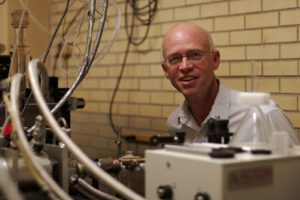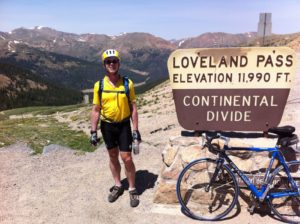2015 Distinguished Lecture Series: Reuben Collins
Confessions of a Naïve Editor-in-Chief
March 25, 2015, 4 p.m.
Student Center Ballrooms
Abstract
 What should you do when you get an invitation to review a paper but don’t want to do it? How do you compute a journal’s impact factor and is it the best metric for judging the journal? You went to a conference that required a proceedings, is it ok to publish a regular journal article on the same topic? How did there get to be so many Nature journals?
What should you do when you get an invitation to review a paper but don’t want to do it? How do you compute a journal’s impact factor and is it the best metric for judging the journal? You went to a conference that required a proceedings, is it ok to publish a regular journal article on the same topic? How did there get to be so many Nature journals?
These are all things I probably should have known when a colleague encouraged me a little more than a year ago to apply to be the next editor-in-chief of Applied Physics Letters.
What I did know was that APL had been published for 50 years and had a loyal (if aging) following. I had published my first archival article in APL as a graduate student. It was one of two journals I had delivered to my office early in my career so I could keep up with the important advances in my research fields. Several of my most visible papers reside within its pages. I also knew I was looking for a new challenge. At the time of this writing, I have been the editor-in-chief for a bit less than six months, and I certainly found the challenge I was seeking.
APL publishes more than 5,000 papers a year. It does this with a team of nearly 20 editors. I accepted the position at a time of great change in the publishing landscape. New journals appear almost daily. There is considerable competition for top papers. Open access is bearing down on publishers like a freight train. There is growing globalization in science publishing with an ever-increasing fraction of articles coming from China.
Within this context, it is the job of the editor-in-chief to hire and manage all of APL’s editors; interface with the publisher; set the journal’s priorities, acceptance criteria and review process; and deal with comments, responses, and ethical violations. Perhaps of most importance, the editor is responsible for keeping the journal relevant and of value to its community. The latter often translates into maintaining or improving the journal Impact Factor.
My goal in this talk is two fold. First, I would like to share some of what I didn’t know but have learned about APL and scientific publishing. This will involve providing background on Applied Physics Letters within the context of the many scientific journals that authors can choose from. I will describe how papers are handled and edited and discuss some of the changes I have implemented, or am in the process of implementing, for APL. I would like to follow this up with a more open discussion with the audience of some interesting and vexing questions in scientific publishing like those posed above. In the process I plan to present a few anecdotes from my first few months as an editor-in-chief that illustrate the challenges and rewards of the position.
Bio
 Physics Professor Reuben Collins’ research interests include fabrication and properties of quantized structures, photovoltaics, novel light emitting materials and devices, microelectronics, silicon compatible optoelectronics, plasmonics, scanning probe microscopy, nanolithography, and physics education.
Physics Professor Reuben Collins’ research interests include fabrication and properties of quantized structures, photovoltaics, novel light emitting materials and devices, microelectronics, silicon compatible optoelectronics, plasmonics, scanning probe microscopy, nanolithography, and physics education.
He is currently editor-in-chief of Applied Physics Letters, associate director of the Renewable Energy Materials Research Science and Engineering Center, and director of the Center for Solar and Electronic Materials.
Collins has previously held positions at the Laboratoire Louis Neel in Grenoble, France and the IBM T. J. Watson Research Center.
He earned his bachelor’s degree in physics and mathematics from the University of Northern Iowa, his master’s and PhD in applied physics from California Institute of Technology.
Awards and professional activities include:
- Colorado School of Mines Excellence in Research Award 2013
- Elected 2013 Chair of the APS topical group on Energy Research and Applications (GERA)
- Fellow of the American Physical Society, elected 2012
- Center for Revolutionary Solar Photoconversion Distinguished Colleague, elected 2009
- Colorado School of Mines Dean’s Excellence Award, spring 2000